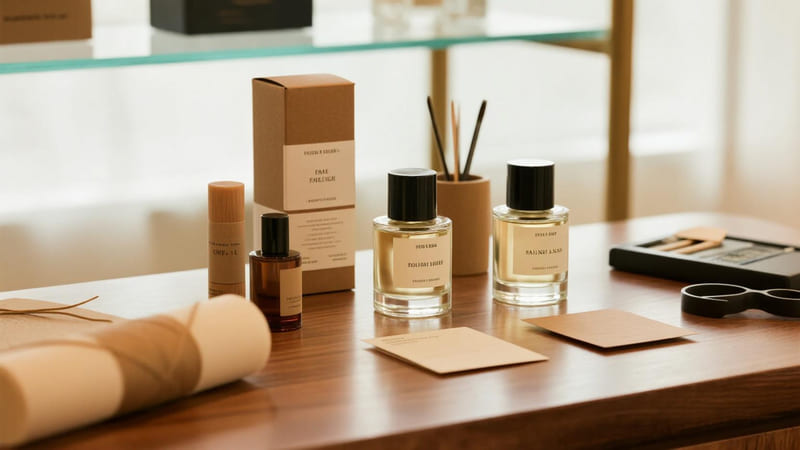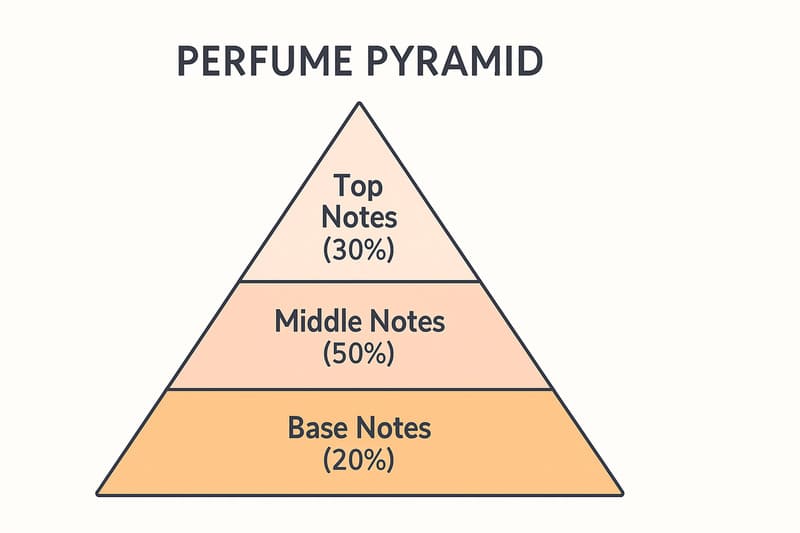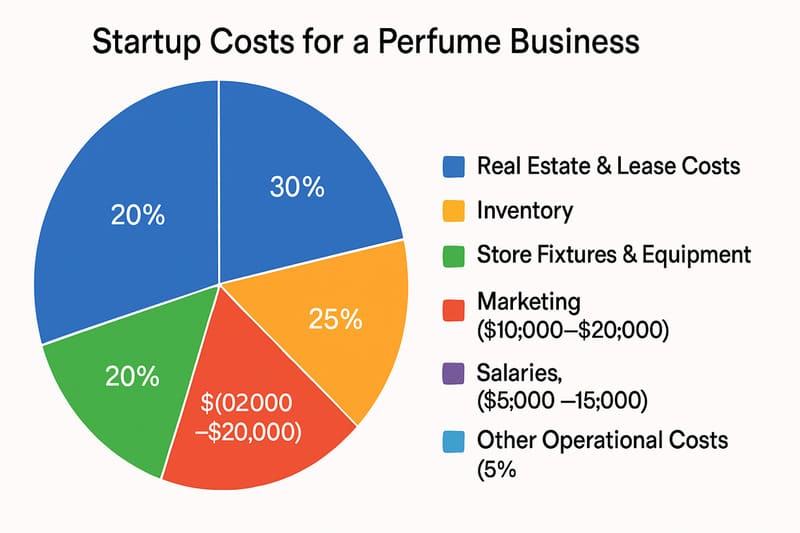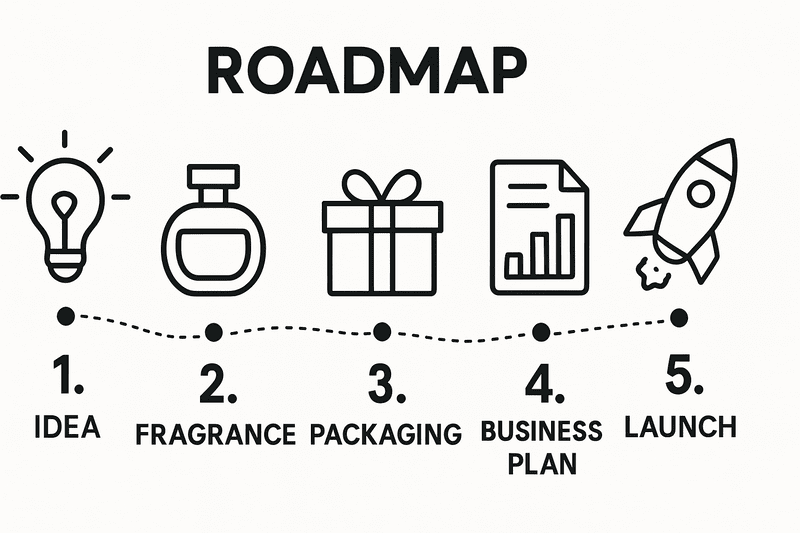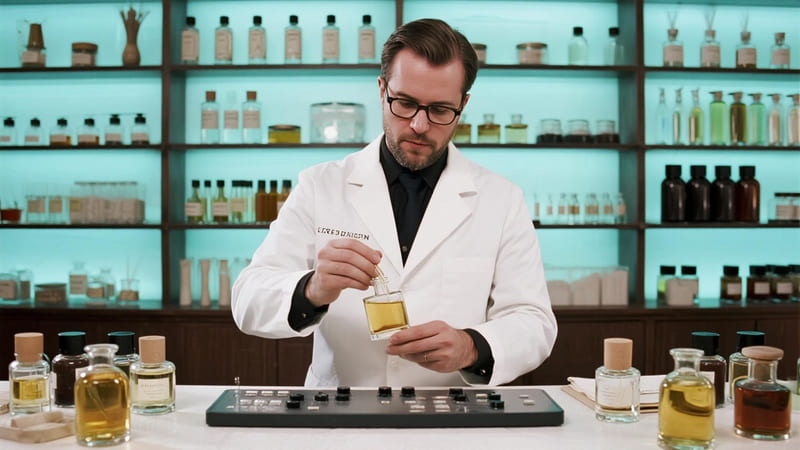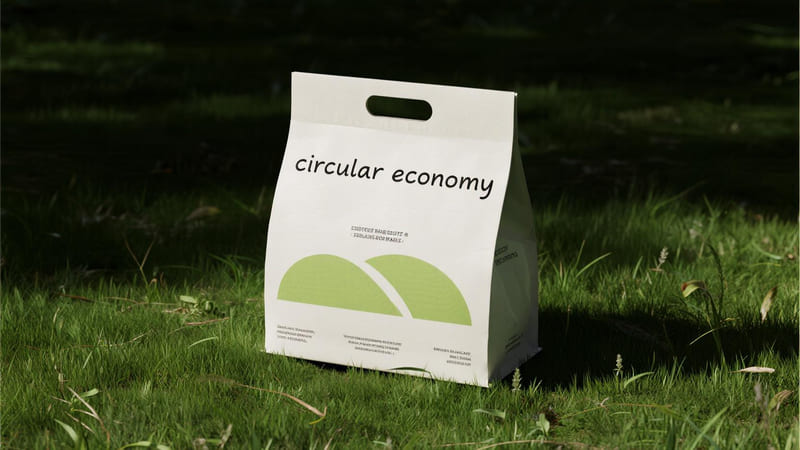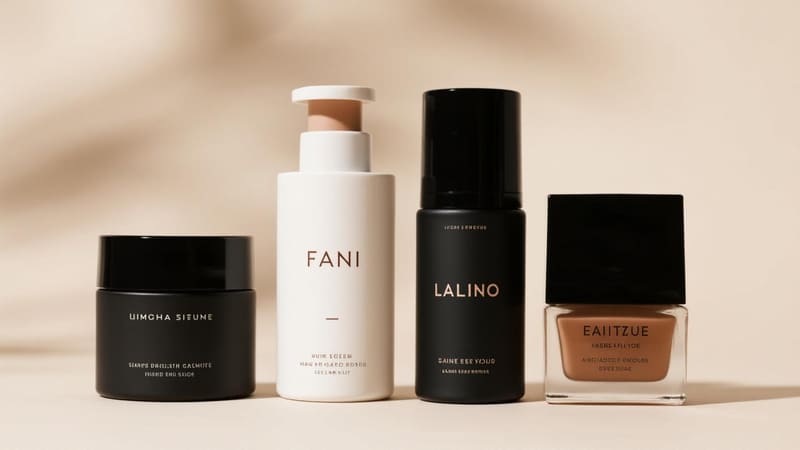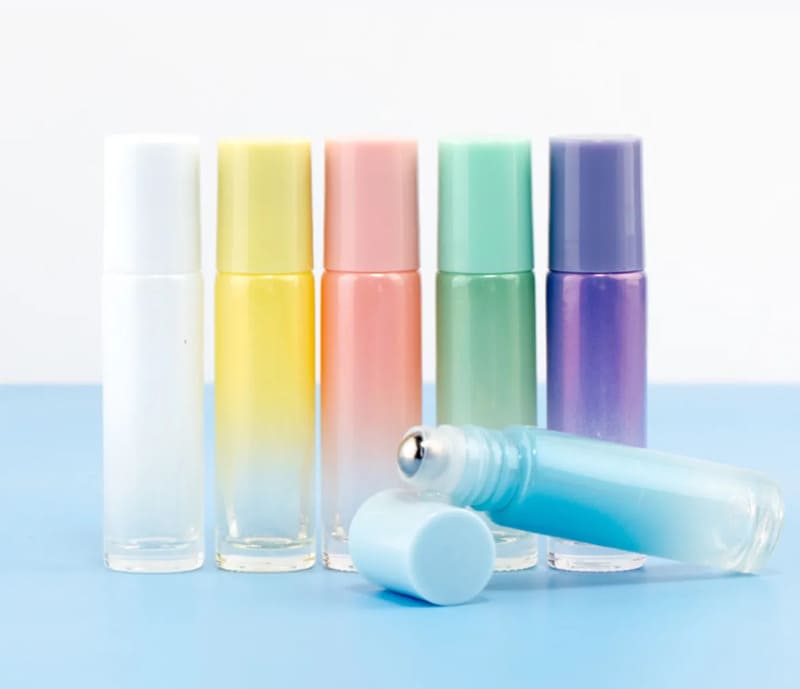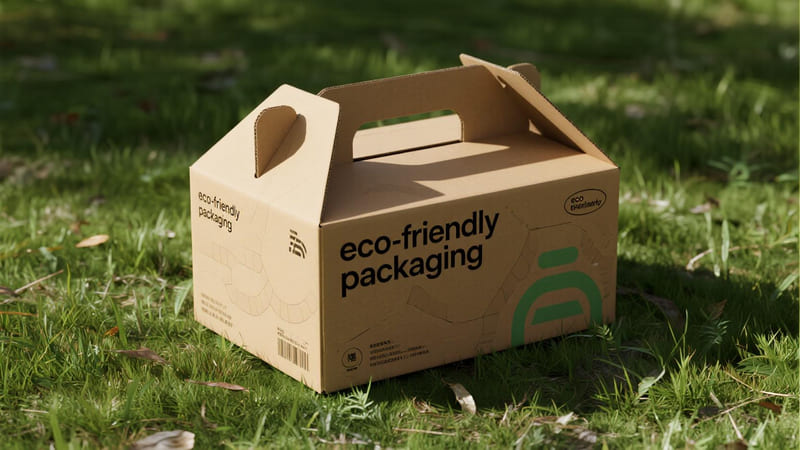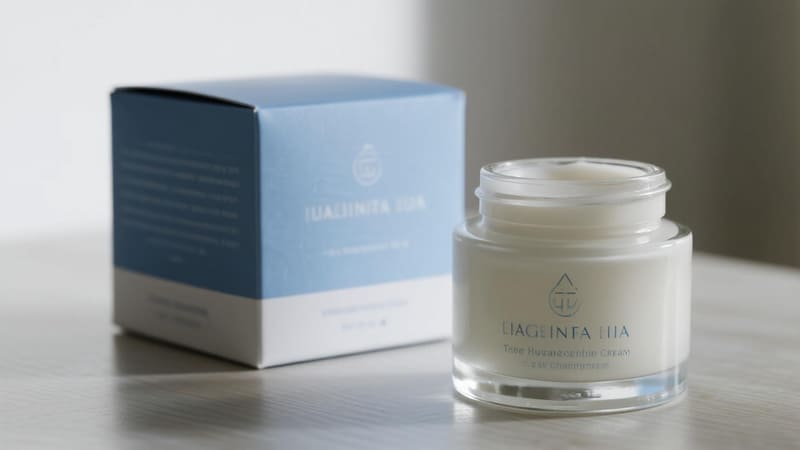Launching a perfume business is a captivating journey into the world of scent, branding, and artistry. It’s an opportunity to create a unique sensory experience that tells a story and connects with people on an emotional level. However, turning this fragrant dream into a successful business requires a blend of creativity, strategic planning, and business acumen.
To start a perfume business, begin by defining your brand’s unique concept and target audience. Then, develop your fragrance (via a perfumer, fragrance house, or by learning yourself), source high-quality packaging, ensure regulatory compliance for ingredients and labeling, create a solid business and marketing plan, and launch your brand through chosen sales channels like e-commerce.
Starting a perfume business is a complex but incredibly rewarding endeavor. As a packaging expert with ShineTop for over two decades, I’ve partnered with many fragrance entrepreneurs, helping them create the perfect bottle and box to house their precious creations. This guide will walk you through the essential steps from concept to launch.
What is the 30/50/20 Rule for Perfume?
Before you can sell a perfume, you must create one. Understanding the basic structure of a fragrance is fundamental. The 30/50/20 rule is a classic guideline for creating a balanced and harmonious scent profile.
The 30/50/20 rule for perfume is a blending guideline for creating a balanced fragrance structure using top, middle, and base notes. It suggests a ratio of approximately 30% top notes (the initial impression), 50% middle notes (the heart of the fragrance), and 20% base notes (the deep, long-lasting foundation).
This structure ensures the perfume evolves beautifully on the skin.
- Top Notes (30%):
- Role: The first scent you smell. They are made of light, volatile molecules that evaporate quickly (typically within 5-15 minutes). They create the initial sparkle and draw you in.
- Examples: Citrus (Bergamot, Lemon, Mandarin), Light Herbs (Mint, Basil), Aldehydes.
- Middle Notes / The "Heart" (50%):
- Role: The core of the fragrance. They emerge after the top notes fade and form the main character of the scent. They are less volatile and can last for several hours.
- Examples: Florals (Rose, Jasmine, Ylang-Ylang, Lavender), Spices (Cinnamon, Clove, Nutmeg), some Fruits.
- Base Notes / The "Dry Down" (20%):
- Role: The foundation of the perfume. They are made of heavy, large molecules that evaporate very slowly, giving the fragrance depth, richness, and longevity. They are the scents that linger on the skin for many hours.
- Examples: Woods (Sandalwood, Cedarwood, Vetiver), Resins (Frankincense, Myrrh, Amber), Musks, Vanilla, Oakmoss.
While this is a guideline and not a rigid law, understanding this structure is crucial whether you are blending yourself or communicating your vision to a professional perfumer.
How Much Would it Cost to Start a Perfume Business?
The cost of starting a perfume business can vary dramatically, from a few thousand dollars for a small-scale, lean startup to hundreds of thousands or more for a large-scale luxury launch.
The cost to start a perfume business can range from approximately $5,000 – $25,000 for a small-scale launch using stock components and private label formulas, to $50,000 – $200,000+ for a brand with custom formulations and custom packaging. Key expenses include fragrance development, packaging, inventory, branding, marketing, and legal/business setup.
Here’s a breakdown of potential costs:
-
Fragrance Development & Production:
- Private Label / Stock Fragrance: Lower cost. You might pay a few hundred to a few thousand dollars for the initial development fee and first batch of concentrate.
- Custom Formulation with a Perfumer/Fragrance House: This is a major investment. Development fees can range from $5,000 to $30,000+, plus the cost of the fragrance concentrate per kilogram.
- Raw Materials (if blending yourself): Can start with a few hundred dollars for a basic organ, but a professional palette costs many thousands.
-
Packaging (A Significant Cost):
- Stock Packaging: Using off-the-shelf bottles, pumps, and caps is more affordable. Costs might be $2 – $5 per unit for all components.
- Custom Packaging: This is where ShineTop specializes. Creating a custom mold for a glass bottle can cost $5,000 – $15,000+. A custom cap mold (e.g., for Zamac) can be $3,000 – $10,000+. The per-unit cost then depends on volume.
- Boxes: Custom-printed folding cartons might be $0.50 – $2.00 per unit, while luxury rigid boxes can be $3 – $10+ per unit, depending on quantity and finishes.
- Total Packaging Cost per Unit: Can range from $3 to $20+.
-
Branding & Marketing:
- Logo & Brand Design: $500 – $5,000+.
- Website (E-commerce): $1,000 – $10,000+.
- Photography/Videography: $1,000 – $7,000+.
- Initial Marketing Budget (Ads, Influencers): $2,000 – $20,000+.
-
Business & Operational Costs:
- Business Registration & Legal Fees: $500 – $2,500+.
- Insurance (Product Liability): Essential. $500 – $2,000+ annually.
- Inventory: The cost of your first production run (fragrance + packaging + assembly). This is often the largest single expense.
Lean Startup (Estimate): ~$15,000
Custom Launch (Estimate): ~$75,000+
How to Start a Perfume Business from Scratch?
Starting from scratch is a detailed process. Here is a step-by-step guide to take you from a simple idea to a market-ready product.
To start a perfume business from scratch: 1. Define your brand niche and story. 2. Educate yourself on fragrance basics. 3. Decide on your fragrance creation method (DIY, perfumer, fragrance house). 4. Develop your signature scent(s). 5. Source high-quality, brand-aligned packaging. 6. Ensure all regulatory compliance. 7. Create a business plan and secure funding. 8. Build your brand and marketing assets. 9. Launch and sell.
A Detailed Roadmap:
-
Phase 1: Concept & Foundation
- Define Your "Why": What is the story behind your brand? What emotion do you want to evoke?
- Identify Your Target Audience: Who are you creating this for?
- Research: Analyze the market, identify trends, and find your unique positioning.
- Educate Yourself: Learn about fragrance families, notes, raw materials, and the blending process.
-
Phase 2: Fragrance Creation
- Choose Your Path:
- DIY: For artisans. Start small, learn safety, document everything.
- Hire a Perfumer: Find an independent perfumer to collaborate with and bring your vision to life.
- Work with a Fragrance House: Companies like Givaudan, Firmenich, or IFF can develop scents, but often require very large commitments.
- Develop the Scent: This is an iterative process of briefing, sampling, and refining until the fragrance is perfect.
- Choose Your Path:
-
Phase 3: Sourcing & Production
- Source Your Components:
- Fragrance Concentrate: From your perfumer/fragrance house.
- Perfumer’s Alcohol (SDA): Source from a licensed supplier.
- Packaging: This is a critical step. Partner with a supplier like ShineTop to source or create your bottles, pumps, caps, and boxes. My client Mohammed from Iraq, who creates luxury fragrance sets, works with us for months to perfect his custom packaging.
- Find a Compounder/Filler (if not doing it yourself): A facility that will mix your concentrate with alcohol, let it macerate (age), chill/filter it, and fill it into your bottles.
- Source Your Components:
-
Phase 4: Branding & Business Setup
- Finalize Branding: Logo, brand guidelines, box design.
- Legal: Register your business, trademark your brand name, get product liability insurance.
- Compliance: Ensure your final product and packaging labels meet all regulations (e.g., IFRA standards for fragrance safety, FDA/EU labeling rules).
- Business Plan: Finalize your budget, pricing, and financial projections.
-
Phase 5: Marketing & Launch
- Build Your Platform: Create your e-commerce website and social media presence.
- Create Content: Invest in beautiful product photography and storytelling.
- Launch: Execute your marketing plan to drive awareness and initial sales.
How to Become a Certified Perfumer?
Becoming a perfumer is a highly specialized and demanding career path that blends art and science. While there isn’t a single, universal "certification" like there is for doctors or lawyers, there are prestigious schools and training paths that are recognized as the industry standard.
To become a perfumer, one typically follows a path of formal education at a renowned perfumery school (like ISIPCA in France), undertakes a long apprenticeship within a major fragrance house (like Givaudan, Firmenich, IFF), or learns through extensive self-study and practice as an independent perfumer. There is no single official "certification," but graduation from these top schools or training programs serves as the highest credential.
The path to becoming a professional perfumer, often called a "nose," is long and requires immense dedication.
Paths to Becoming a Perfumer:
-
Formal Perfumery Schools (The Most Prestigious Route):
- ISIPCA (Institut supérieur international du parfum, de la cosmétique et de l’aromatique alimentaire): Located in Versailles, France, and founded by Jean-Jacques Guerlain. This is arguably the most famous perfumery school in the world. Admission is highly competitive and often requires a degree in chemistry.
- Grasse Institute of Perfumery (GIP): Located in Grasse, the historical heart of French perfumery. Offers intensive professional training programs.
- In-House Schools at Fragrance Houses: The major fragrance corporations (Givaudan, Firmenich, IFF, Symrise) have their own highly exclusive and rigorous internal training schools. It’s very difficult to get into these; you are typically hired as a trainee after demonstrating exceptional talent and often having a chemistry background.
-
Apprenticeship / Trainee Programs:
- This is the traditional way. You would work your way up within a fragrance company, starting as a lab assistant, learning to evaluate scents, and eventually, if you show talent, being trained by senior perfumers. This process can take 7-10 years or more.
-
Independent / Artisan Perfumery:
- Self-Study: This path has become more accessible with the internet. It involves extensive reading, joining online communities, and investing in a wide range of raw materials to practice blending.
- Workshops & Courses: Many independent perfumers and smaller schools offer workshops and courses that can range from a few days to several months.
- Building a Portfolio: Creating your own fragrances and developing a unique style.
- Note: This path requires immense self-discipline and investment in materials. It’s how many successful niche and indie perfumers get their start.
Is a Chemistry Degree Required?
- For entry into top schools like ISIPCA or training programs at major fragrance houses, a degree in chemistry or a related science is often a prerequisite. It provides a crucial understanding of molecular structures, reactions, and safety.
- For independent perfumery, it’s not strictly required, but a strong understanding of chemical principles is extremely beneficial and highly recommended for safety and effective formulation.
There is no shortcut to becoming a perfumer. It requires a highly developed sense of smell, a deep knowledge of thousands of raw materials, an understanding of chemistry, and years of dedicated practice to master the art and science of fragrance creation.
Conclusion
Starting a perfume business is a journey fueled by passion, creativity, and meticulous planning. From understanding the fundamental structure of a fragrance to navigating the significant costs, developing a unique brand, sourcing exquisite packaging, and ensuring regulatory compliance, each step is crucial. While becoming a certified perfumer is a long and dedicated path through prestigious schools or apprenticeships, entrepreneurs can collaborate with these talented artists to bring their own fragrant visions to life. With the right strategy and partners, an idea can indeed blossom into a successful and beloved perfume brand.

